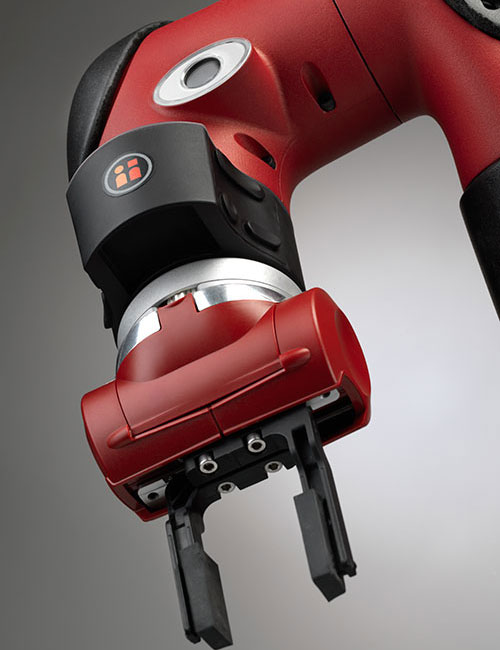Inexpensive table-top robots will disrupt light manufacturing

Last month's Automate 2015, which organizers bill as the largest showcase of automation technologies in North America, signaled a change in the wind for light manufacturing.
Alongside the beefier industrial robots, a handful of well-packaged, low-cost collaborative bots for small- and medium-sized businesses had industry-watchers abuzz. Much of the chatter has focused on the obvious: flexible automation technology is now available at a modest price point. That was bound to happen sooner or later, but the real significance, and the reason big shifts are in the offing for light manufacturing worldwide, is that the new devices are coming along at precisely the right moment in the economic recovery to make them primed for quick adoption.
To understand why, consider Los Angeles, where I live. Drill presses and metal foundries may not leap to mind when a passing hipster croons "That's so L.A.," but manufacturing is a way of life in a city that accounts for 523,100 manufacturing jobs, more than any other metro area in the country. Much of L.A.'s industrial base comprises small- and medium-size businesses, which makes it an important bellwether for the health of the nation's light manufacturing sector. So how's the industrial renaissance going?
Cue the hipster: It's, like, complicated.

In search of anecdotal insights about the state of light manufacturing, I reached out to James Tschortner, CEO of Goldbrecht USA, a manufacturer of door and window solutions in the L.A. area. "The main issue is the lack of educated manpower in the market," he says. "When we have interviews, we have people coming in, and we're extremely surprised by what they don't know."
It's understandably vexing to weed through unqualified applicants. But pull the lens back a bit and the lack of qualified manpower should come as no surprise. The twin birds of economic prey, off-shoring and automation, went after low-skilled manufacturing jobs first. Middle- and high-skilled jobs were more resilient until the recession took a big bite; all told, we lost about 6 million manufacturing jobs in the U.S. between 1990 and 2012, according to a report prepared last year by the Los Angeles County Economic Development Corporation.
Over the same period, however, national manufacturing output grew by 46.7 percent. In other words, productivity skyrocketed. In durable goods, labor productivity rose 142 percent between 1990 and 2011, a clear signal that manufacturers have been investing in technology over labor.
That's been Tschortner's approach. With targeted investments in technology, his company has been able to keep pace with demand, despite not being able to find qualified workers. But now that construction is once again booming -- translation: lots of orders for doors and windows -- he needs to ramp up operations quickly. In years past, that would be a good thing for prospective employees. Automation has its limits, after all, especially when it comes to smaller manufacturers like Goldbrecht USA.
Which brings us back to the Automate show. Tschortner's experience is not unique. Nationwide, executives at small- and medium-sized manufacturing companies are facing booming demand and wondering where they should invest resources. The new breed of small, smart industrial robots are designed to integrate into existing operations seamlessly to augment human labor. They've been branded "collaborative" technology and are designed to be used in concert with an existing workforce. It doesn't take much of an imagination to wonder who would have been occupying the workbench where any one of these bots gets installed.
Here are three new automation solutions that are inexpensive, flexible in application, and intuitive to work with. They're marketed as collaborative machines. Here's a more accurate sales pitch: Meet the new face of light manufacturing.
Sawyer from Rethink Robotics
Overview: Sawyer, which comes with a familiar digital face, has seven degrees of freedom, weighs 42 pounds, and plugs into a standard outlet. High res force sensors on each joint and two cameras give it a high degree of precision for delicate work.
Applications: Machine tending, circuit board testing, material handling
Price: $29,000
UR3 from Universal Robots
Overview: The UR3 is a six-axis articulated arm. Each wrist joint has 360 degrees of rotation, while the end joint has infinite rotation and can set screws to appropriate torque.
Applications: Pick-and-place, soldering, screwing, gluing, painting
Price: $23,000
Yumi from ABB
Overview: A two-armed robot designed with adaptable hands, flexible parts feeders, force control sensing, and vision guidance.
Applications: Small parts assembly, especially in consumer electronics.
PRICE: TBA sometime in April